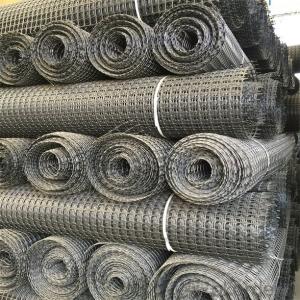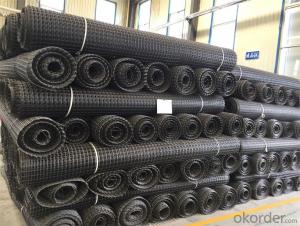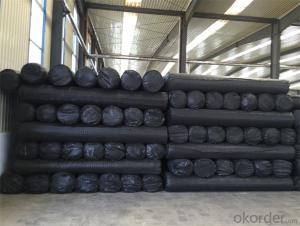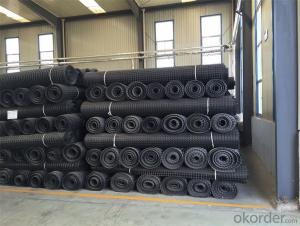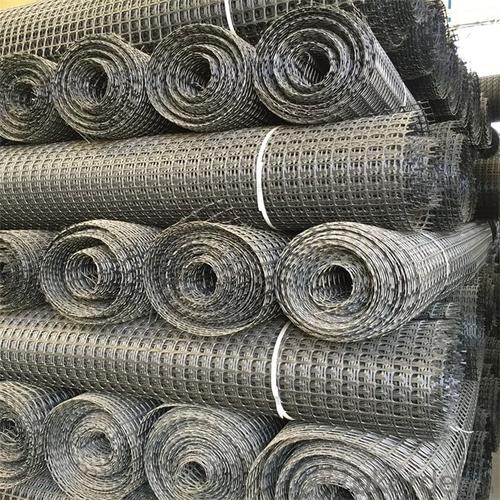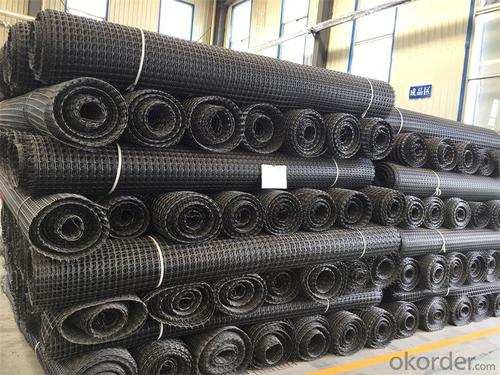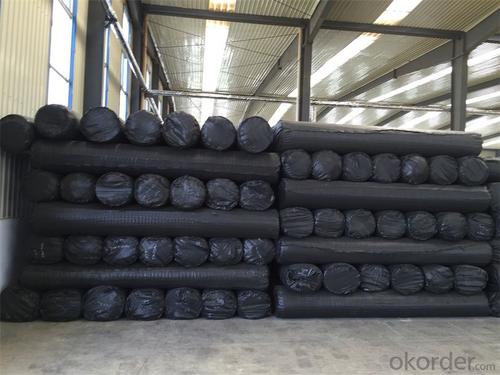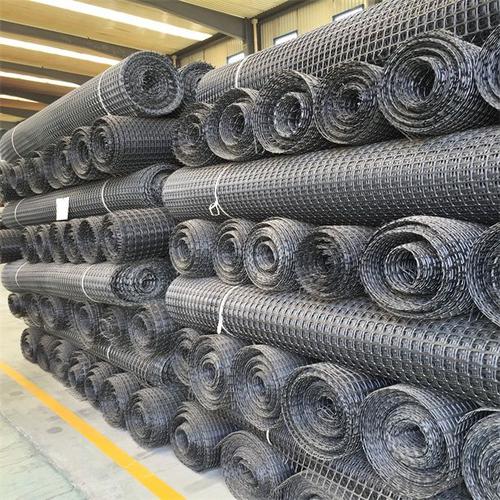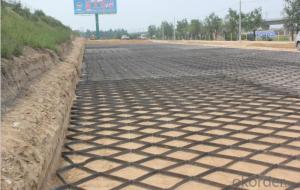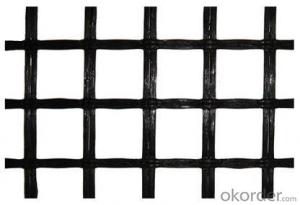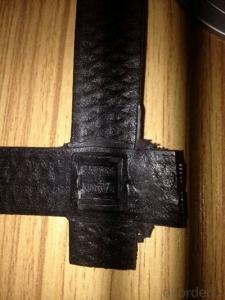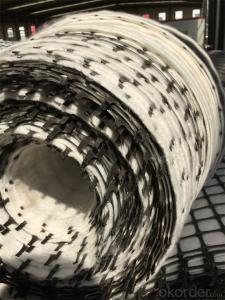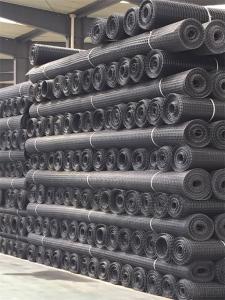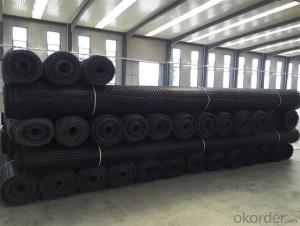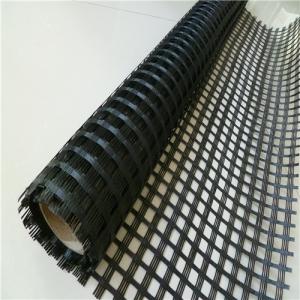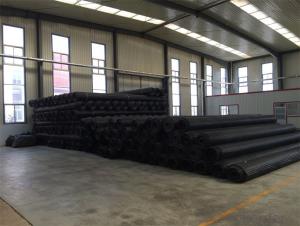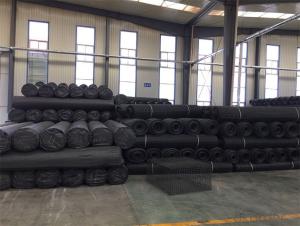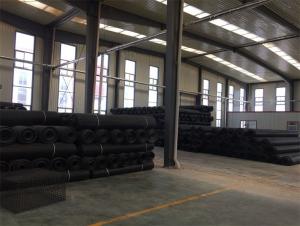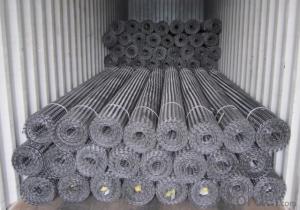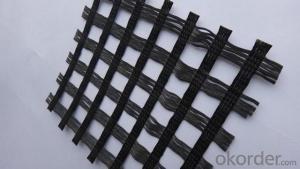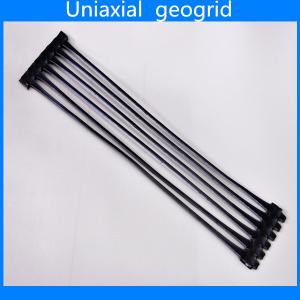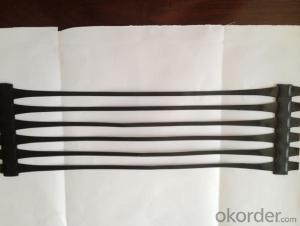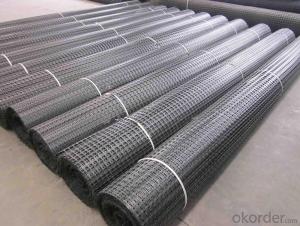Interlock Biaxial Geogrids - Fiberglass Warp Knitted Cmax Brand with High Tensile Strength
- Loading Port:
- Tianjin
- Payment Terms:
- TT OR LC
- Min Order Qty:
- 20000 m²
- Supply Capability:
- 50000000 m²/month
OKorder Service Pledge
OKorder Financial Service
You Might Also Like
Fiberglass Geogrid Introduction:
Fiberglass geogrid is a kind of planar mesh material using alkali-free fiberglass yarn as base body and then coated with high quality modified asphalt. It is warp knitted with oriental structure which gives full play of yarn strength and improves its mechanical property to make the product high tensile, tearing and creep-resistant. Moreover, the composite property of coating with asphalt makes full protection of the fiberglass matrix and greatly improves its wear and shear resistance. All the advantageous functions make the product have a good performance in pavement strengthening, track cracking and solving difficulties of strengthening the bituminous pavement.
Fiberglass Geogrid Features:
1. Light weight, high tensile strength, high modulus, low elongation and good toughness.
2. Corrosion resistance, no long-term creep, long life span.
3. Good physical and chemical stability and good thermal stability.
4. Resistant to fatigue cracking, high-temperature track and low temperature shrinkage cracking.
5. Delaying and decreasing crack reflection.
Specifications | PET20-20 | PET30-30 | PET40-40 | PET50-50 | PET80-80 | PET100-100 | PET120-120 |
Elongation(%) | 10%~15% | ||||||
Vert Tensile strength(KN/m) | 20 | 30 | 40 | 50 | 80 | 100 | 120 |
Horiz Tensile strength(KN/m) | 20 | 30 | 40 | 50 | 80 | 100 | 120 |
Grid(mm) | 12.5×12.5 20×20 24.5×24.5 | ||||||
Width(m) | 1—6 | ||||||
Fiberglass Geogrid Application:
1. Road surface asphalt overlay construction engineering; Asphalt layers
reinforcement.
2. Converting old cement concrete road into composite road; Restraining
reflection cracking caused by block shrinkage.
3. Road extension; Preventing and controlling the cracking caused by new
and old combination and uneven settlement.
4. Treatment of the conjunction between tunnel and bridge or foundation.
Packaging & Shipping:
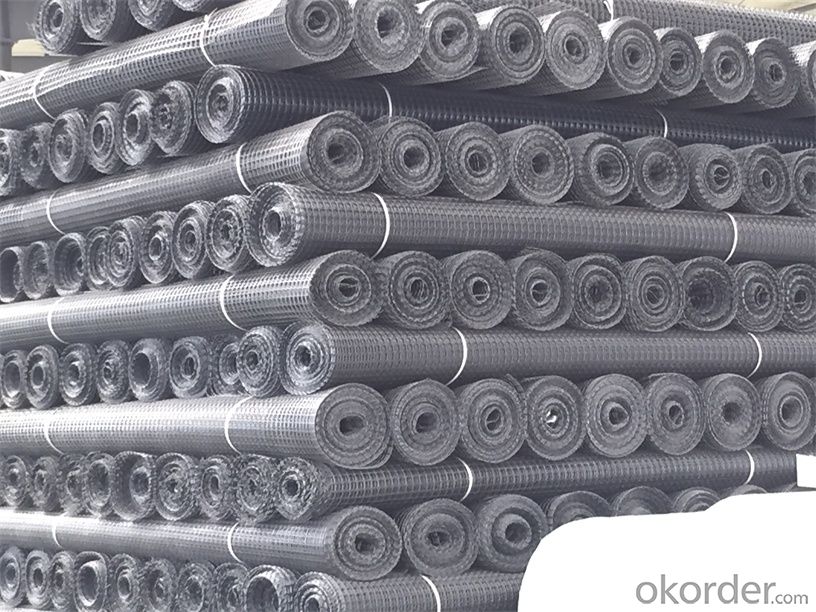
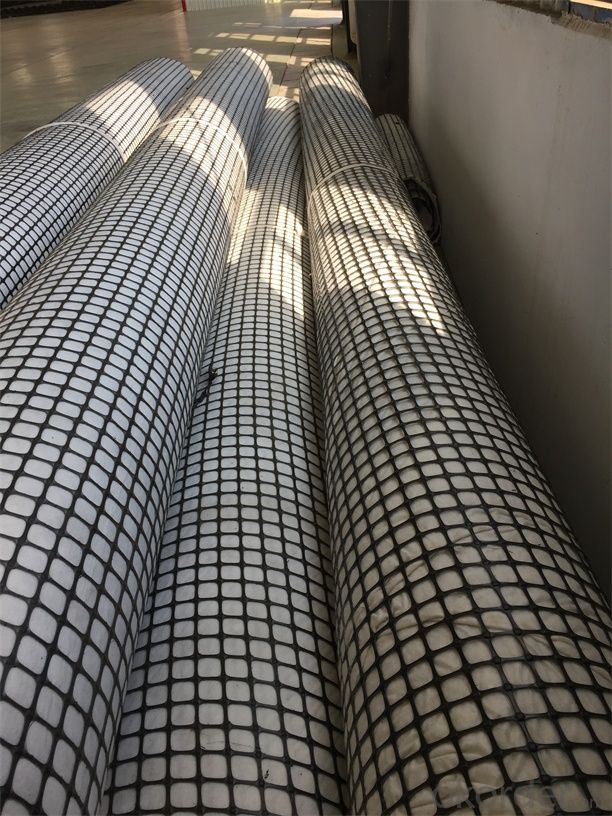
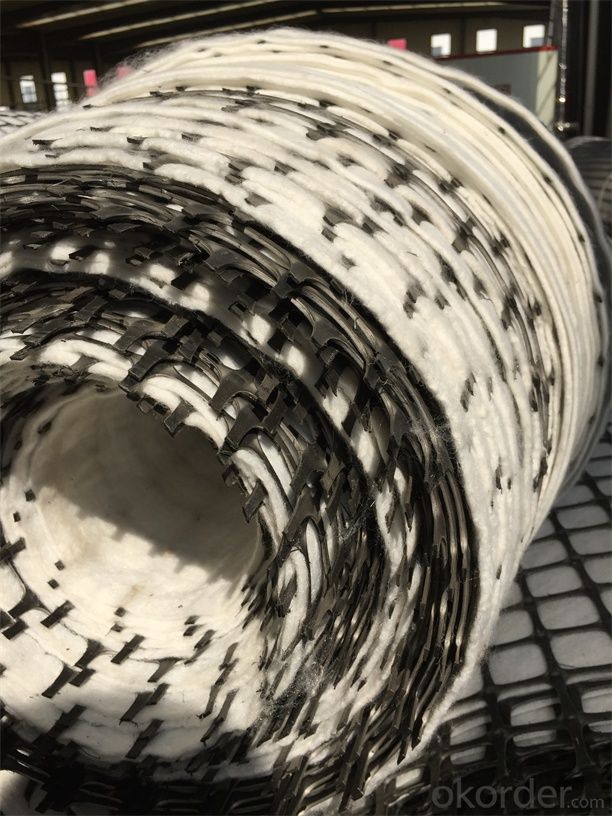
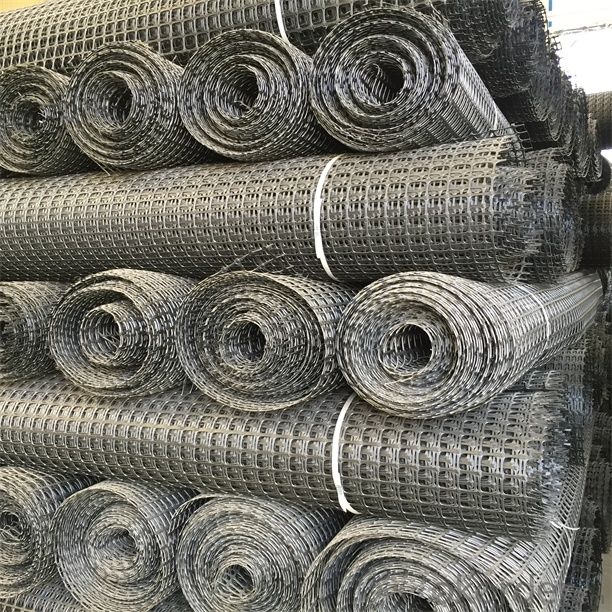
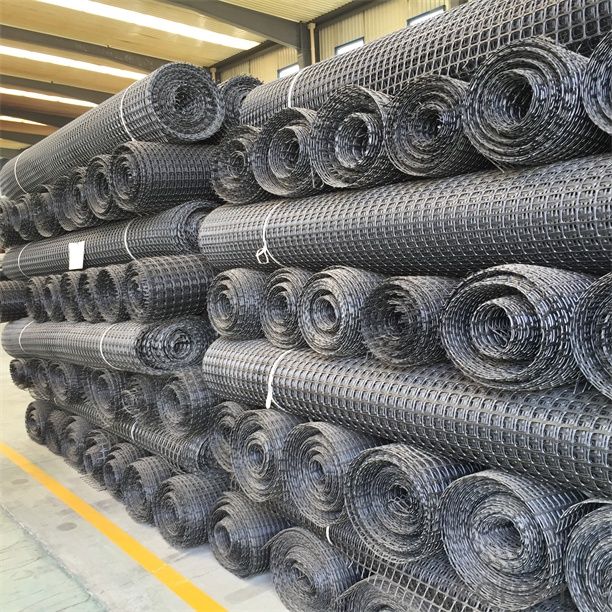
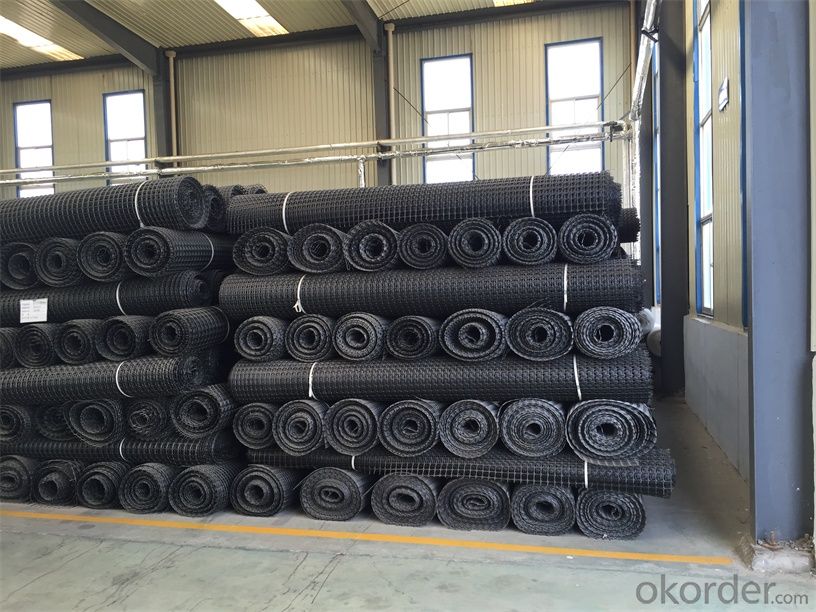
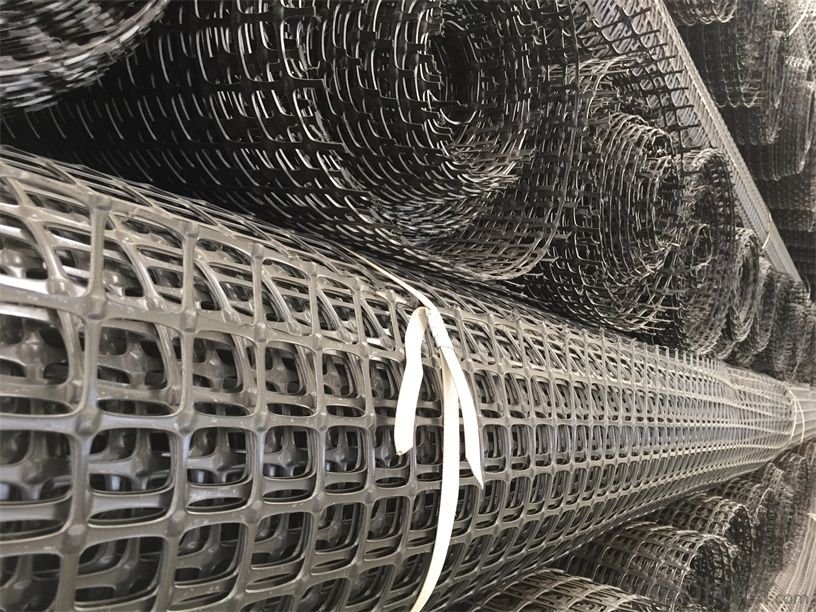
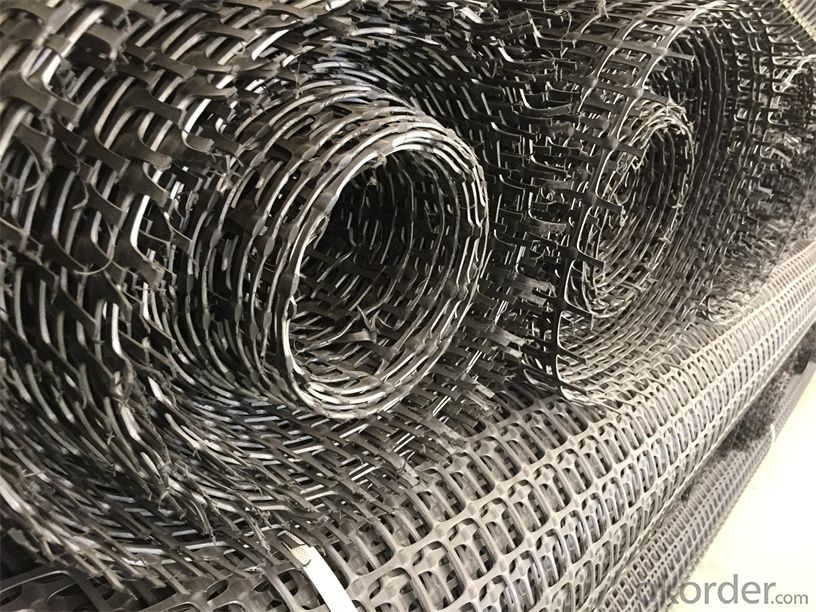
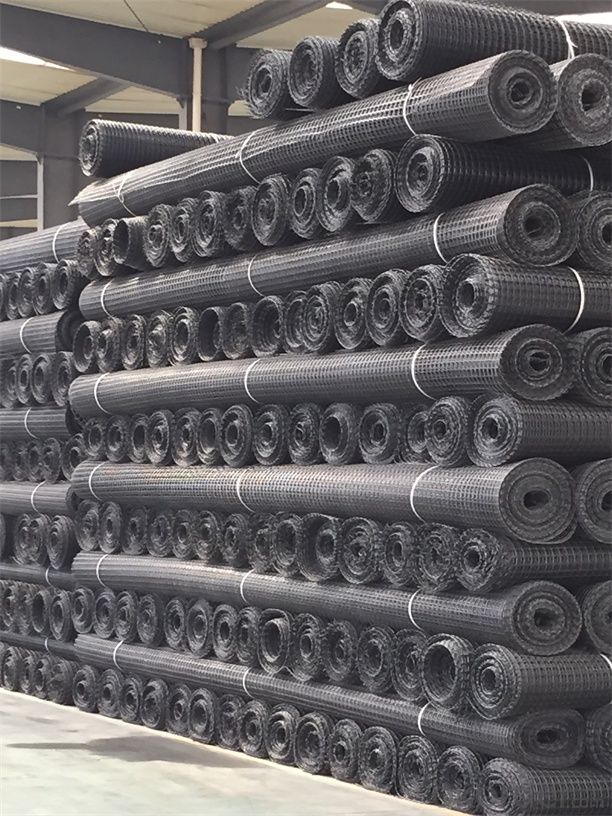
FAQ:
1. How to order your geogrid ?
a) Tensile strength in warp & weft direction
b) Grid size
c) Roll Width and length
d) Quantity
2. What is the Payment term?
a) TT
b) LC AT SIGHT
c) cash
d) 30% contact value as deposit ,the blance 70% be paid after received the copy of bl .
3. Delivery time
a) 19-25 days after received your depsit .
4. What is MQQ ?
a) 2500 m2 as MQQ , we can also produce sample for you .
Welcome to send your inquiry to us, and if you have any question, we can also help you.
- Q: How do geogrids improve the stability of levees?
- Geogrids improve the stability of levees by providing reinforcement and increased tensile strength. These engineered materials are placed within the levee structure, creating a network of interconnected elements that distribute and withstand the forces exerted on the levee. This helps to prevent slope failure, soil erosion, and potential breaches, ultimately enhancing the overall stability and safety of the levee system.
- Q: What kind of circumstances need to shop geogrid
- The mechanism of geogrid reinforced soil exists in the interaction between Geogrid and soil. Generally, it can be concluded that the friction between Geogrid and soil, the locking effect of Geogrid on Soil and the passive resistance of grid ribs. The three kinds of actions can restrain the lateral displacement of the soil, which greatly increases the stability of the soil, and the reinforcement effect of the soil is obviously higher than that of other geotextile.
- Q: How do geogrids improve the load-bearing capacity of soil?
- Geogrids improve the load-bearing capacity of soil by providing reinforcement and stabilization. They create a strong interlocking system within the soil, preventing lateral movement and distributing loads more evenly. This reduces soil settlement and increases its ability to withstand heavy loads, ultimately improving the overall stability and performance of the soil.
- Q: How do geogrids help in reducing the risk of soil erosion?
- Geogrids help in reducing the risk of soil erosion by providing reinforcement and stabilization to the soil. They are typically made of high-strength materials like polyester or polypropylene, which are resistant to degradation and can withstand heavy loads. When placed in soil, geogrids create a network of interconnected cells that increase the soil's resistance to erosion caused by water flow or wind. This reinforcement prevents the soil particles from being displaced, maintaining the integrity of the slope or embankment. Geogrids also improve soil drainage, allowing excess water to pass through and reducing the likelihood of erosion. Overall, geogrids act as a physical barrier against erosion forces, enhancing the stability and longevity of soil structures.
- Q: How do geogrids help in reducing soil settlement?
- Geogrids help in reducing soil settlement by providing reinforcement to the soil structure, which helps distribute the load more evenly and prevent excessive settlement. They act as a stabilizing element by increasing the tensile strength of the soil, preventing its movement and settling.
- Q: And specification.. Thank you for answering me
- It is estimated that which is the boring manufacturers to use basalt fiber grille
- Q: What is the difference between geogrids and geotextiles?
- Geogrids are typically used for soil reinforcement and stabilization, providing structural support to prevent soil movement. On the other hand, geotextiles are used for filtration, drainage, and separation purposes, allowing water to pass through while preventing soil migration. Essentially, geogrids focus on reinforcement, while geotextiles focus on filtration and separation.
- Q: How many Chinese geogrid manufacturers? How many famous
- Manufacturers have more than N, there is no specific how much to say
- Q: Which kind of polypropylene geogrid belongs to the geogrid?,Geogrid is divided into four categories: plastic geogrid, steel plastic geogrid, fiberglass geogrid and fiberglass polyester geogridPlastic geogrid?
- Which kind of geogrid belongs to geogrid?Plastics geogrids divided tgsg and geogrid, geogrid and unidirectional polypropylene geogrid and unidirectional polyethylene geogrid, tgsg material is polypropylene;
- Q: What are some common standards and specifications for geogrids?
- Some common standards and specifications for geogrids include ASTM D6637 (Standard Test Method for Determining Tensile Properties of Geogrids by the Single or Multi-Rib Tensile Method), ASTM D5262 (Standard Test Method for Evaluating the Unconfined Tension Creep and Creep Rupture Behavior of Geosynthetics), and ISO 10318 (Geosynthetics - Wide-width tensile test). These standards provide guidelines for testing and measuring the tensile strength, creep behavior, and other mechanical properties of geogrids.
Send your message to us
Interlock Biaxial Geogrids - Fiberglass Warp Knitted Cmax Brand with High Tensile Strength
- Loading Port:
- Tianjin
- Payment Terms:
- TT OR LC
- Min Order Qty:
- 20000 m²
- Supply Capability:
- 50000000 m²/month
OKorder Service Pledge
OKorder Financial Service
Similar products
Hot products
Hot Searches
Related keywords
